Pichon-Comtesse’s Singular Identity DNA Like No Other Pauillac – A Strut Through Two Decades (2000 to 2019)
‘When you’re number two, you try harder.’
Had the phrase not already been copyrighted by Avis in 1962, Château Pichon Longueville Comtesse de Lalande might well be using it for their tag line today. Under the 1855 Classification, which Napoleon III requested for the Exposition Universelle de Paris, Pichon-Comtesse fell under the Deuxièmes Grands Crus Classés, or Second Classified Growths. But between the years 1978 and 2007, under the ownership of May Eliane de Lencquesaing, so consistent did the quality prove (including the 100-point 1982) that the estate earned a reputation as a ‘Super Second’—a status that is unofficial if undisputable and may credibly be applied to only a select few of the original fourteen Second Growths.
In 2007, May Eliane de Lencquesaing sold the property to the Rouzaud family, owners and descendants of Louis Roederer, who have approached the property and its heralded terroir with the philosophy that auspicious geology may earn you a nineteenth century classification, but the ‘je ne sais quoi’ of producing consistently spectacular wine is as closely aligned with land stewardship as land itself and with technique as much as with perfect fruit.
This remains an ongoing pursuit that suffers no second-class efforts.
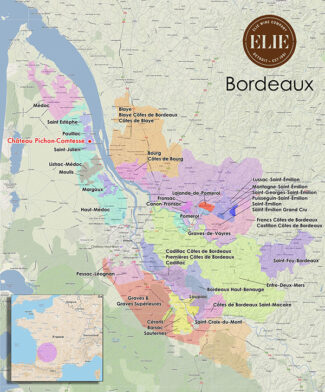
|
|

|
|
According to the French poet Antoine de Saint-Exupéry, ‘Civilization is a heritage of beliefs, customs and knowledge slowly accumulated in the course of centuries, elements difficult at the times to justify by logic, but justifying themselves as paths when they lead somewhere, since they open up for man his inner distance.”
At Pichon-Comtesse, bordering on Château Latour, two families have been responsible for maintaining this wine’s superb reputation for more three centuries. Today, the caretakers of the estate view wine itself as a form of civilization, relying on six defining cultural features to illustrate the concept:
First, language, which transcends time and actions and kindles emotions. It is the instrument of destiny. At Pichon-Comtesse, wine is a living language, with roots that have grown deeper over the centuries, learned and passed on to revealing the nuance of its unique linguistic landscape.
Next, the land, where the French way of life is established. In Pauillac, notably poor soils comprised of gravel over clay provide an ideal foundation for Cabernet Sauvignon to grow, while the unique microclimate of the Left Bank offers a protective influence that allows it to thrive.
Third, the architecture: the neoclassical style of Château Pichon-Comtesse expresses in stone, wood and glass the harmony and understated elegance that is mirrored in the Grand Vin.
Then, the values that underscore the centuries-old fundamentals of a flourishing culture, Civilizations, as diverse as they are, share their own sense of justice. The château cultivates and honors three values above all—expertise handed down through the ages, preserving environmental heritage and maintaining lasting ties with the Bordeaux wine community.
Fifth, the technical mastery that underscores the evolution of any society. The skillset required to make a fine wine are complex and multifaceted, combining expertise and precision. Knowing when to intervene and when to sit back are crucial as a winemaker accompanies the product throughout its journey as a messenger of the terroir.
Lastly, art; the cultural cornerstone of any civilization. Pichon-Comtesse views art and wine as products of the same intention: the infinitely variable interplay of structure, harmony, and balance. Wine is both the catalyst of civilization and its most beautiful artistic expression.
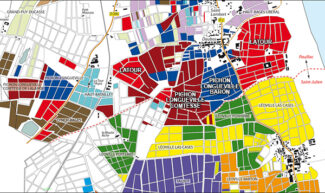
|
|
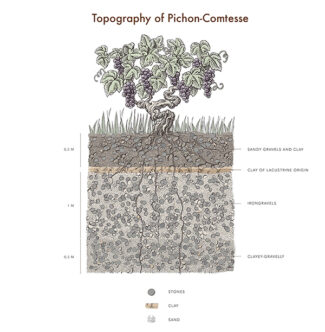
|
|
|
|
|
|
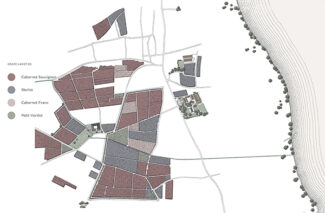
Winemaking techniques reflect both tradition and innovation. Winemaker and general manager at Château Pichon Longueville Comtesse de Lalande (and Château de Pez in Saint-Estèphe) is Nicolas Glumineau. Born in 1974, he studied at the University of Oenology in Bordeaux with Professor Denis Dubourdieu and obtained a Master of Genetics applied to oenology. He furthered his studies at the National Agronomic School of Montpellier, beginning his career at Château Haut-Brion in 2005 and Château Margaux in 2006. He describes the innovations that Pichon Lalande offers: “A new triple-tiered cellar moves everything by gravity and double-skinned vats allow us to vinify on a parcel-by-parcel basis, helping with softer, gentler extractions and providing the wines with its legendary sensuousness, replete with concentrated layers of ripe berries and perfumed with fresh violet blossoms, tobacco leaves, earth and truffles.”
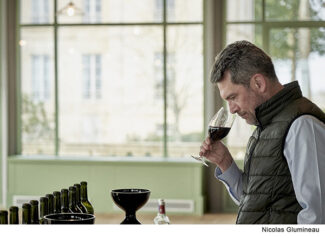
|
|
|
|
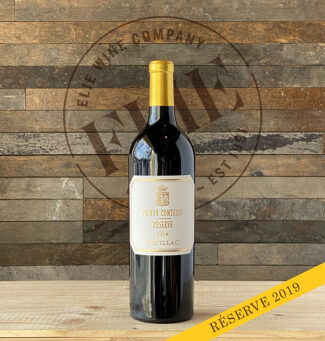 2019 Pichon-Comtesse Réserve, Pauillac ($55)
2019 Pichon-Comtesse Réserve, Pauillac ($55)
Well-structured and completely approachable now, there is sufficient tannin and acidity to cellar it for a while, but like most second wines, it will develop rather quickly.
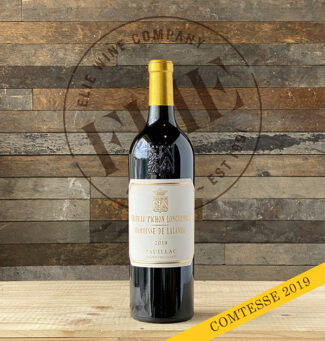 2019 Château Pichon Longueville – Comtesse de Lalande, Pauillac ($255)
2019 Château Pichon Longueville – Comtesse de Lalande, Pauillac ($255)
Having spent 18 months in cask, 60% new French oak, the blend is 71% Cabernet Sauvignon, 23% Merlot, and 6% Cabernet Franc. Unerring symmetry and poise, it offers an array of warm cassis and wild blueberries scents with underlying hints of Morello cherries, redcurrant jelly, pencil shavings, menthol and aniseed with a touch of charcoal.
|
|
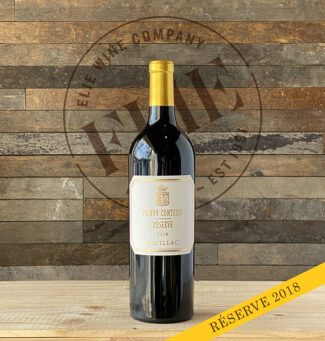 2018 Pichon-Comtesse Réserve, Pauillac ($68)
2018 Pichon-Comtesse Réserve, Pauillac ($68)
The wine exhibits cassis, blackberry, pepper and tobacco notes behind aromas of dried violets, blackcurrants, oyster shells, ink and bitter chocolate. It’s medium-bodied, with firm, tight-grained tannins and a nicely austere finish.
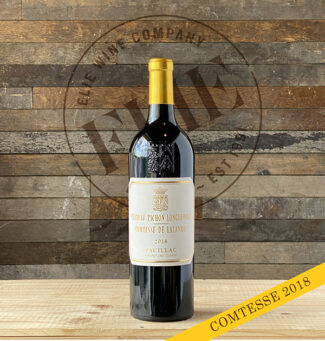 2018 Château Pichon Longueville – Comtesse de Lalande, Pauillac ($315)
2018 Château Pichon Longueville – Comtesse de Lalande, Pauillac ($315)
A massive wine that lends credence to the château’s ‘Super Second’ status. First Growth intensity with both stature and structure, offering deep undertones of blackcurrants, crushed stone, scorched earth, lead pencil shavings, and tobacco leaf and finishing on a lingering, fragrant-earth note.
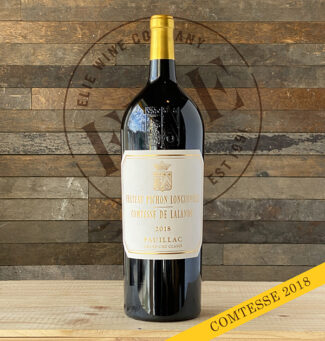 2018 Château Pichon Longueville – Comtesse de Lalande, Pauillac ($630) – en magnum
2018 Château Pichon Longueville – Comtesse de Lalande, Pauillac ($630) – en magnum
What is twice better than a bottle of Pichon-Comtesse 2018? A magnum of the same.
|
|
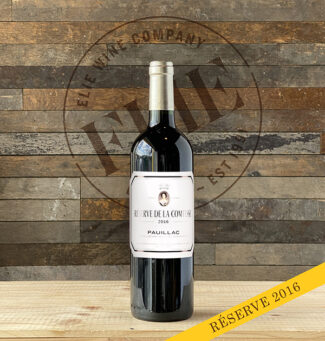 2016 Pichon-Comtesse Réserve, Pauillac ($82)
2016 Pichon-Comtesse Réserve, Pauillac ($82)
54% Cabernet Sauvignon, 37% Merlot, 5% Petit Verdot, 4% Cabernet Franc. The luscious ripe berries and plums on the nose are attractively dressed with rose-petal and violet notes to provide fullness on the palate. Balanced and elegant with a hint of pastis at the end.
|
|
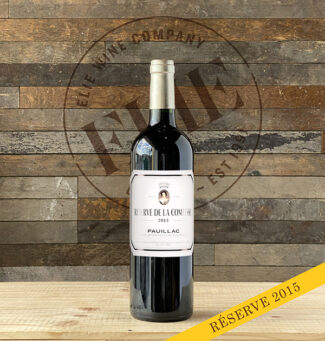 2015 Pichon-Comtesse Réserve, Pauillac ($76)
2015 Pichon-Comtesse Réserve, Pauillac ($76)
A blend of 53% Cabernet Sauvignon, 40% Merlot with the balance in Cabernet Franc and Petit Verdot; it reveals a deep purple color as well as medium to full-bodied notes of cassis, plums, garrigue herbs and spring flowers. This is a ripe, sexy, opulent second wine that’s ideal for drinking tonight or over the coming decade.
|
|
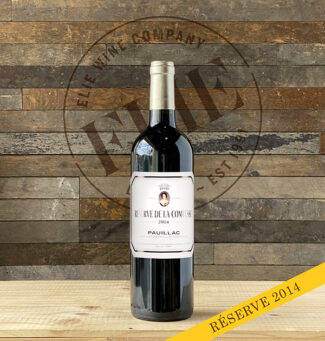 2014 Pichon-Comtesse Réserve, Pauillac ($79)
2014 Pichon-Comtesse Réserve, Pauillac ($79)
59% Cabernet Sauvignon and 41% Merlot, offering a classic Pauillac profile of cassis, iron and graphite with layers of blueberry, blackberry and boysenberry washing over the tannic grip; suave and concentrated, but equally robust and structured.
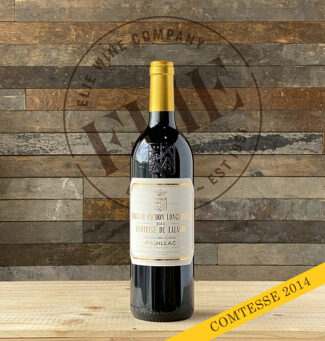 2014 Château Pichon Longueville – Comtesse de Lalande, Pauillac ($221)
2014 Château Pichon Longueville – Comtesse de Lalande, Pauillac ($221)
This is a finely structured wine with dark tannins and intense black fruits, providing an immaculately pure wine packed with tight serious tannins and a fine structure of black-plum skins and acidity. It is direct, firm and with a huge potential over many years.
|
|
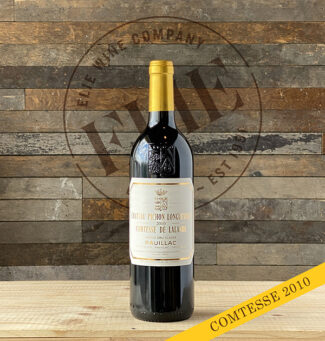 2010 Château Pichon Longueville – Comtesse de Lalande, Pauillac ($382)
2010 Château Pichon Longueville – Comtesse de Lalande, Pauillac ($382)
A showstopper that offers first impressions of explosive power, but with aeration, a delicate, floral profile that emerges replete with violet, graphite, crème de cassis, licorice and menthol. A wine as big as those from 1996, but with the tannic backbone softer, sweeter and more polished.
|
|
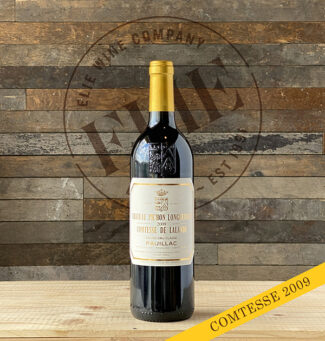 2009 Château Pichon Longueville – Comtesse de Lalande, Pauillac ($314)
2009 Château Pichon Longueville – Comtesse de Lalande, Pauillac ($314)
The wine shows cassis, plums, cedar, lead pencil, fennel, coffee, and the elegantly textured palate is filled with intense fruit and, pure, supple tannins, finishing with exotic plum compote and chocolate-covered cherries.
|
|
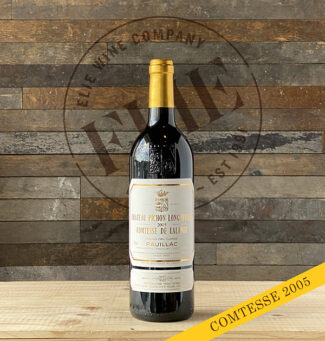 2005 Château Pichon Longueville – Comtesse de Lalande, Pauillac ($320)
2005 Château Pichon Longueville – Comtesse de Lalande, Pauillac ($320)
A wonderfully extracted effort that captures the complexity and rich brambly fruit for which the Pauillac appellation is justly revered, and does so with a remarkable sense of balance and composition. The ample tannins have mellowed, but the wine retains the depth of its juicy substance.
|
|
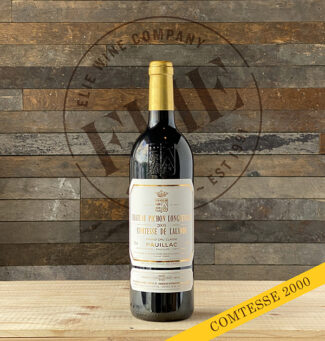 2000 Château Pichon Longueville – Comtesse de Lalande, Pauillac ($390)
2000 Château Pichon Longueville – Comtesse de Lalande, Pauillac ($390)
The wine’s spicy, meaty nose is lovely and robust with plum and berry fruits. The palate is showing wonderful evolution: elegant berry fruits, hints of spice, earth and roast coffee.
Pichon-Comtesse Masterclass With The Château’s Director Charles Fournier
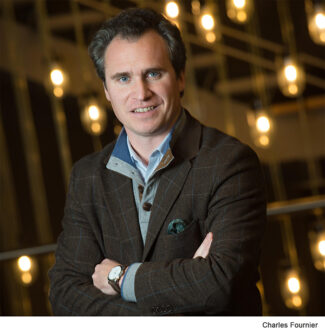 As a special expression of thanks to valued patrons who have purchased Château Pichon over the years, Elie Wine Company is proud to extend an invitation to a special tasting and dinner on March 29, 2022. Hosted by Charles Fournier, Commercial and Marketing Director at Château Pichon-Comtesse, we will make a vinous trail through a decade of Pichon wines, both the Pichon-Comtesse Réserve and the Grand Vin. Fournier will taste and discuss the following vintages: Pichon Comtesse Réserve’s 2018, 2015, 2014 and Grand Vin’s 2014, 2010, 2009. The tasting will be followed by a special dinner.
As a special expression of thanks to valued patrons who have purchased Château Pichon over the years, Elie Wine Company is proud to extend an invitation to a special tasting and dinner on March 29, 2022. Hosted by Charles Fournier, Commercial and Marketing Director at Château Pichon-Comtesse, we will make a vinous trail through a decade of Pichon wines, both the Pichon-Comtesse Réserve and the Grand Vin. Fournier will taste and discuss the following vintages: Pichon Comtesse Réserve’s 2018, 2015, 2014 and Grand Vin’s 2014, 2010, 2009. The tasting will be followed by a special dinner.
- - -
Posted on 2022.03.21 in Pauillac, France, Bordeaux
Featured Wines
- Notebook: A’Boudt Town
- Saturday Sips Wines
- Saturday Sips Review Club
- The Champagne Society
- Wine-Aid Packages
Wine Regions
Grape Varieties
Aglianico, Albarino, Albarín Blanco, Albarín Tinto, Albillo, Aleatico, Arbanne, Aubun, Barbarossa, barbera, Beaune, Biancu Gentile, bourboulenc, Cabernet Franc, Cabernet Sauvignon, Caino, Caladoc, Calvi, Carcajolu-Neru, Carignan, Chablis, Chardonnay, Chasselas, Clairette, Corvina, Cot, Counoise, Erbamat, Ferrol, Fiano, Frappato, Friulano, Fromenteau, Fumin, Garnacha, Gewurztraminer, Godello, Graciano, Grenache, Grolleau, Groppello, Juan Garcia, Lambrusco, Loureira, Macabeo, Macabou, Malvasia, Malvasia Nera, Marsanne, Marselan, Marzemino, Melon de Bourgogne, Merlot, Mondeuse, Montanaccia, Montepulciano, Morescola, Morescono, Moscatell, Muscadelle, Muscat, Natural, Nero d'Avola, Parellada, Patrimonio, Petit Meslier, Petit Verdot, Pineau d'Aunis, Pinot Auxerrois, Pinot Blanc, Pinot Gris, Pinot Meunier, Pinot Noir, Poulsard, Prieto Picudo, Rondinella, Rousanne, Roussanne, Sangiovese, Sauvignon Blanc, Savignin, Semillon, Souson, Sparkling, Sumoll, Sylvaner, Syrah, Tannat, Tempranillo, Trebbiano, Trebbiano Valtenesi, Treixadura, Trousseau, Ugni Blanc, vaccarèse, Verdicchio, Vermentino, Viognier, Viura, Xarel-loWines & Events by Date
- April 2024
- March 2024
- February 2024
- January 2024
- December 2023
- November 2023
- October 2023
- September 2023
- August 2023
- July 2023
- June 2023
- May 2023
- April 2023
- March 2023
- February 2023
- January 2023
- December 2022
- November 2022
- October 2022
- September 2022
- August 2022
- July 2022
- June 2022
- May 2022
- April 2022
- March 2022
- February 2022
- January 2022
- December 2021
- November 2021
- October 2021
- September 2021
- August 2021
- July 2021
- June 2021
- May 2021
- April 2021
- March 2021
- February 2021
- January 2021
- December 2020
- November 2020
- October 2020
- September 2020
- August 2020
- July 2020
- June 2020
- May 2020
- April 2020
- March 2020
- February 2020
- January 2020
- December 2019
- November 2019
- October 2019
- September 2019
- August 2019
- July 2019
- June 2019
- May 2019
- April 2019
- March 2019
- February 2019
- January 2019
- December 2018
- November 2018
- October 2018
- September 2018
- August 2018
- July 2018
- June 2018
- May 2018
- April 2018
- March 2018
- February 2018
- January 2018
- December 2017
- November 2017
- October 2017
- September 2017
- August 2017
- July 2017
- June 2017
- May 2017
- April 2017
- March 2017
- February 2017
- January 2017
- December 2016
- November 2016
- October 2016
- September 2016
- August 2016
- July 2016
- June 2016
- May 2016
- April 2016
- March 2016
- February 2016
- January 2016
- December 2015
- November 2015
- October 2015
- September 2015
- August 2015
- July 2015
- June 2015
- May 2015
- April 2015
- March 2015
- February 2015
- January 2015
- December 2014
- November 2014
- October 2014
- September 2014
- August 2014
- July 2014
- June 2014
- April 2014
- March 2014
- February 2014
- January 2014
- December 2013
- November 2013
- October 2013
- September 2013
- August 2013
- July 2013
- June 2013
- May 2013
- April 2013
- March 2013
- February 2013
- January 2013
- December 2012
- November 2012
- October 2012
- February 2004
Search



